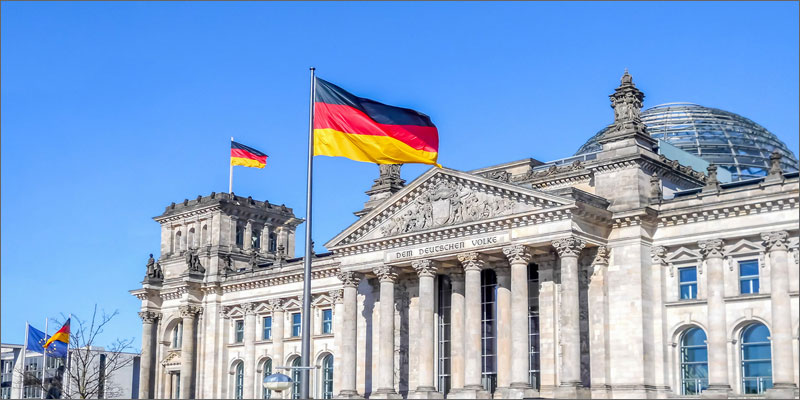Ancient Scythian artifacts returned to Ukraine after decade-long legal battle with Russia
12/05/2023 / By Laura Harris

More than a thousand artifacts from the civilization of the ancient Scythians from the Allard Pierson Museum in Amsterdam have been returned to Ukraine after a nearly decade-long dispute over ownership of the antiques.
The Scythians were an ancient group of nomadic pastoralists centered around the territory of modern-day Ukraine and southwestern Russia and whose culture flourished from about 800 B.C. to about 300 A.D. Many artifacts have been found in the region and dating to the time of the Scythians, including burial offerings made out of gold like jewelry, weapons, richly decorated cups and other elaborate and luxurious grave goods. (Related: 8 Remarkable gold and silver artifacts discovered in 2022.)
The National Museum of History of Ukraine in Kyiv reported that the Allard Pierson Museum returned 565 items and 2,694 kilograms (5,940 pounds) worth of cultural property, including ancient sculptures, Chinese lacquer boxes and jewelry from the Scythians and the Sarmatians – another ancient people closely related to the Scythians and who lived around southern Ukraine.
The collection of historical treasures includes a solid gold Scythian helmet from the 4th century B.C. and a two-pound golden neck ornament from the 2nd century A.D. from the Allard Pierson Museum’s “Crimea: Gold and Secrets of the Black Sea” exhibition.
“After almost 10 years of court hearings, artifacts from four Crimean museums that were presented at the exhibition have returned to Ukraine,” said the National Museum of History of Ukraine in a statement.
The dispute over the ownership of the artifacts intensified when Russia annexed Crimea in 2014. With Russia now recognizing Crimea as its sovereign territory, museums within Russian-occupied Crimea started vying for the return of the Scythian treasures to them.
Museums in Russian-occupied Crimea argued that the Dutch had to return the pieces to the Crimean Peninsula due to the terms of the loan agreement.
Following a protracted legal battle, the Supreme Court of the Netherlands ruled that the artifacts rightfully belonged to Ukraine. The Dutch court based its decision on the fact that the Netherlands and most of the world does not recognize the Russian-annexed Republic of Crimea and still believes that the territory belongs to Ukraine.
“Although the museum pieces originate from Crimea and can therefore also be regarded as Crimean heritage, they are part of the cultural heritage of Ukraine,” the court stated in its ruling.
For its part, the National Museum of History of Ukraine has stated that it intends to hold on to the artifacts until Crimea is freed from Russian occupation.
Ukraine celebrates return of Scythian gold as symbolic victory over Russia
Ukraine has used the successful reclamation of the artifacts as a symbolic victory in the country’s decade-long struggle with Russia.
“We returned home not just valuables that were taken out of Crimea in 2013, but a part of our history,” said Vasyl Malyuk, head of Ukraine’s main intelligence service, which coordinated the shipment from the Netherlands. “For us, as well as for our country in general, this case is symbolic. It shows that Ukraine never gives up what belongs to it by law.”
Malyuk added that Ukraine would have all of the territories it claims and Russia currently occupies “returned.”
“We will fight for our people, our values and our history,” he said.
For its part, Kremlin spokesman Dmitry Peskov continued to insist that the artifacts are the property of Russia, stating in a quote given to state news agency TASS that the artifacts “belong to Crimea and should be there.”
Similarly, the Russian-installed Head of Crimea Sergey Aksyonov, in comments made on Telegram, said that the artifacts should be returned by “achieving the goals of the special military operation” in Ukraine, suggesting that the conquest and occupation of Kyiv is necessary.
Follow Artifacts.news for more news about archaeological discoveries.
Watch the video below to know more about 10 of the most powerful ancient weapons.
This video is from the TopGunsWorld channel on Brighteon.com.
More related stories:
Archaeologists discover boat-shaped mound that could be NOAH’S ARK in Turkish ruins.
Researchers uncover Bronze Age skeletons with “horsemanship syndrome” in Europe.
Humans created bows and arrows in Europe 54,000 years ago, new archaeological study reveals.
Sources include:
Submit a correction >>
Tagged Under:
Allard Pierson Museum, amsterdam, ancient history, artifacts, Crimea, Hidden History, National Museum of History of Ukraine, real history, Russia, Russia-Ukraine war, Sarmatians, Scythians, Ukraine
This article may contain statements that reflect the opinion of the author
RECENT NEWS & ARTICLES
COPYRIGHT © 2022 UkraineWitness.com
All content posted on this site is protected under Free Speech. UkraineWitness.com is not responsible for content written by contributing authors. The information on this site is provided for educational and entertainment purposes only. It is not intended as a substitute for professional advice of any kind. UkraineWitness.com assumes no responsibility for the use or misuse of this material. All trademarks, registered trademarks and service marks mentioned on this site are the property of their respective owners.



















